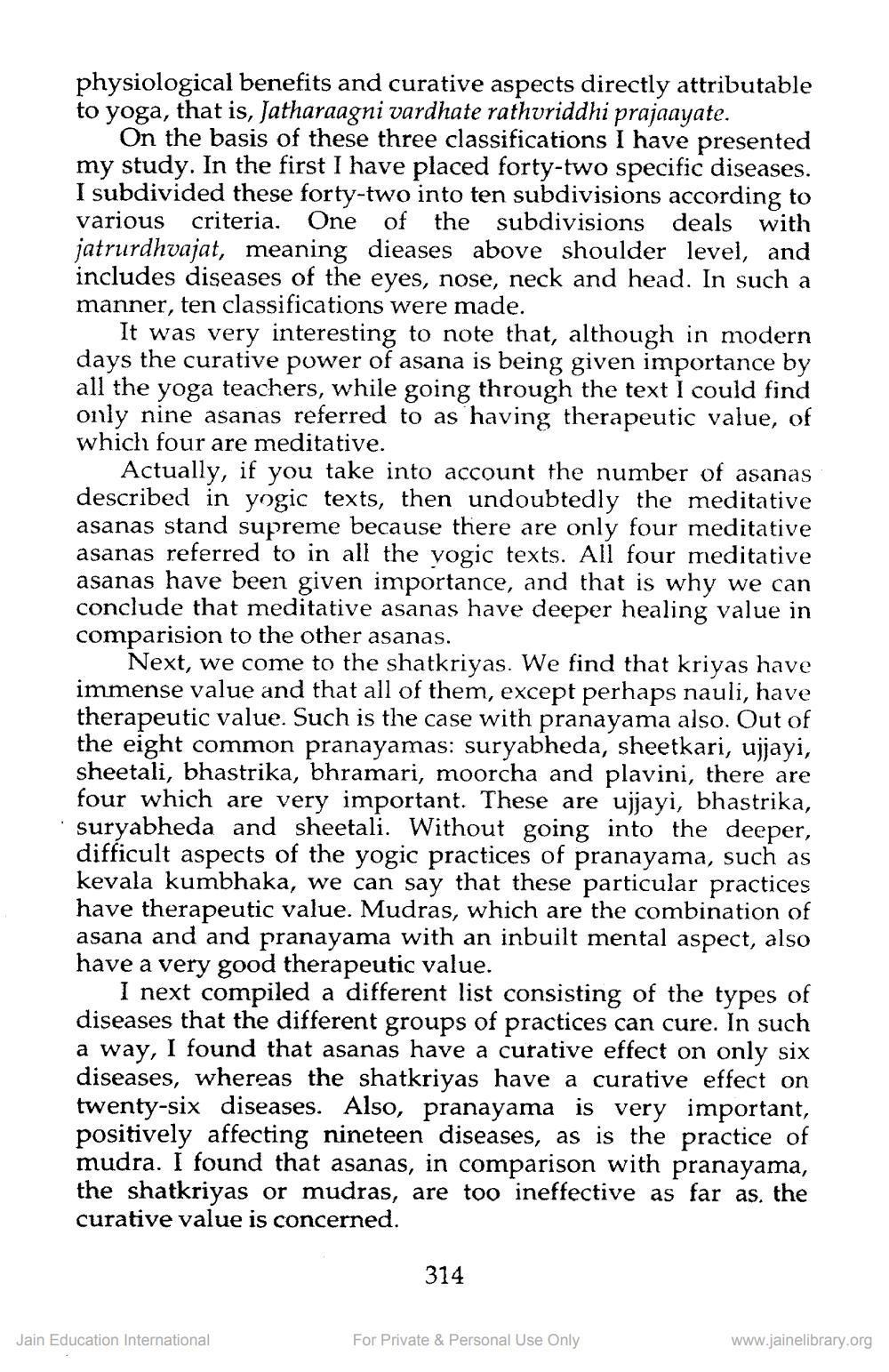________________
physiological benefits and curative aspects directly attributable to yoga, that is, Jatharaagni vardhate rathvriddhi prajaayate.
On the basis of these three classifications I have presented my study. In the first I have placed forty-two specific diseases. I subdivided these forty-two into ten subdivisions according to various criteria. One of the subdivisions deals with jatrurdhvajat, meaning dieases above shoulder level, and includes diseases of the eyes, nose, neck and head. In such a manner, ten classifications were made.
It was very interesting to note that, although in modern days the curative power of asana is being given importa all the yoga teachers, while going through the text I could find only nine asanas referred to as having therapeutic value, of which four are meditative.
Actually, if you take into account the number of asanas described in yogic texts, then undoubtedly the meditative asanas stand supreme because there are only four meditative asanas referred to in all the yogic texts. All four meditative asanas have been given importance, and that is why we can conclude that meditative asanas have deeper healing value in comparision to the other asanas.
Next, we come to the shatkriyas. We find that kriyas have immense value and that all of them, except perhaps nauli, have therapeutic value. Such is the case with pranayama also. Out of the eight common pranayamas: suryabheda, sheetkari, ujjayi, sheetali, bhastrika, bhramari, moorcha and plavini, there are four which are very important. These are ujjayi, bhastrika, suryabheda and sheetali. Without going into the deeper, difficult aspects of the yogic practices of pranayama, such as kevala kumbhaka, we can say that these particular practices have therapeutic value. Mudras, which are the combination of asana and and pranayama with an inbuilt mental aspect, also have a very good therapeutic value.
I next compiled a different list consisting of the types of diseases that the different groups of practices can cure. In such a way, I found that asanas have a curative effect on only six diseases, whereas the shatkriyas have a curative effect on twenty-six diseases. Also, pranayama is very important, positively affecting nineteen diseases, as is the practice of mudra. I found that asanas, in comparison with pranayama, the shatkriyas or mudras, are too ineffective as far as the curative value is concerned.
314
Jain Education International
For Private & Personal Use Only
www.jainelibrary.org




